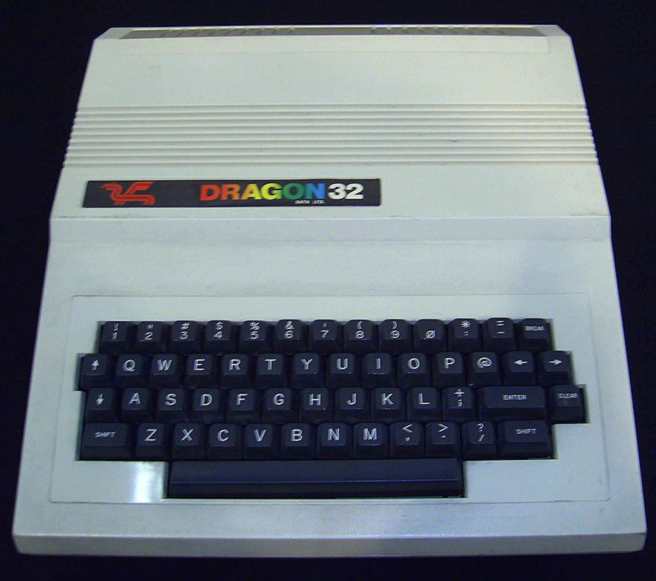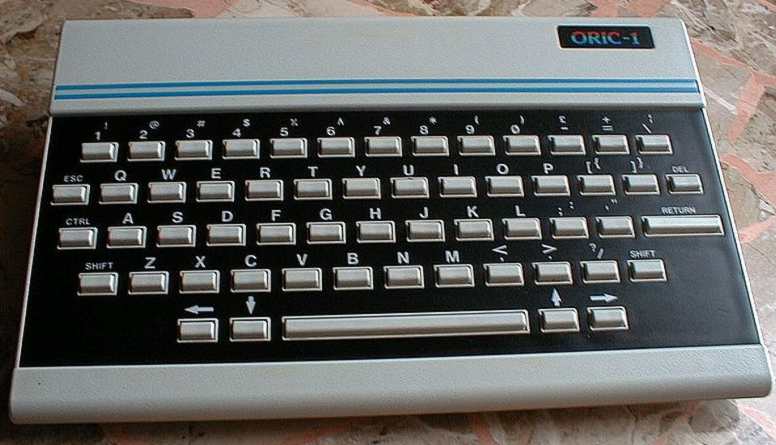| UK Micros of the 1980s |
| Written by Historian | |||||||
Page 3 of 3
The Jupiter Ace Goes Forth
The Jupiter Ace
While Sinclair and Acorn were battling it out there were gaps in the market filled by other smaller companies. First off the blocks at the end of 1982 was Jupiter Cantab with their Jupiter Ace. This strange little machine looked like a ZX81 but had the unique feature of running Forth as its native language. The Ace cost £89.95 and was designed by two of the chief designers of the Sinclair Spectrum. There are still programmers who look back on the Ace as being the most innovative home computer in that it introduced lots of people to Forth. Things might have been very different it Forth had triumphed over less "recursive" languages such as C. The Dragon 32/64
The Dragon A slightly more general purpose machine than the Ace was the Dragon 32 which was produced at more or less the same time. The Dragon was a copy of the Tandy Color computer but "copy" is perhaps too strong a word as they were both based on a design first published by Motorola. The Dragon used a 6809 processor and this was a great attraction to all of the early SWTP/6800 users. A bigger draw was the fact that there was a lot of ready-made software and it was a good games machine for just under £200. This is another machine that could have changed the future. Instead of the strange architecture of the Intel x86 family we might have had the clean logical simplicity of the Motorola 68x family. Home Computer FrenzyWith so many low cost machines to choose from the home computer frenzy was beginning to build. At the end of 1982 even the newspapers and TV programs were starting to take notice of the craze - helped no doubt by the release of the Disney movie "TRON". The name of the movie came from the Microsoft Basic command TRON standing for TRace ON, and yes there was a TROFF command although it didn't feature in the film nor the recent sequel. The movie was all about the hero's efforts to destroy the MCP - Master Control Program - within an imaginary landscape that was supposed to be the inside of a machine. Great fun and the backgrounds were computer generated. The Movie raised public awareness even more and just as everyone wanted a Dalmatian after "101 Dalmatians" or a clown fish after "Saving Nemo" came out everyone wanted a computer.
The Oric The boom fuelled a flood of machines. Soon after the Dragon 32 came the Lynx and the Oric - both at the start of 1983. The Lynx was another Z80 machine but it did have high resolution graphics and only cost £225. The Oric had a slight TV connection in that it's name sounded like the super computer Orac - the real star of “Blake’s 7” a sci-fi series that only achieved cult status after it was cancelled. The Oric, designed by Tangerine Computer Systems, was packaged to look a little like a Spectrum and it was a direct competitor at £99. Its only real advantage was that it had in-built Teletext graphics, a feature that the BBC Micro had but not the Spectrum. There were lots of others. Some never even made it to the mass market. The Oric was followed by the almost identical Atmos, and then there was the Memotech MTX. You have to remember that each one of these machines used a slightly different Basic and Operating Software. Trying to produce programs for them was a nightmare. Soon commercial programmers were begging for no more cheap computers to hit the market! At this time the US imports were beginning to come down in price - the old Atari 400 could be bought for £199 and the new Commodore 64 was £200 - and the Japanese entered the fray with the MSX family. On the whole, though, the UK market had enough choice without imports. End of an EraNow all these machines and the companies that made them are just a memory because in the end it's software that counts and the huge US market slowly but surely ensured that the IBM PC worked its way to the top of the heap. Soon the mass media had forgotten about the computer craze because the skateboard had arrived. The UK’s early independent ways had further effects in that we built home grown machines such as the Amstrad CPC, PCW, 1512 and 1640 long after every other country surrendered to the regular PC.
The Amstrad PCW
Forty years on and you would hardly know it all happened - but it was a wild and exciting time in the UK. The ZX-81 in particular was the machine that introduced the masses to personal computers, mainly through being able to write and play your own games ... which as we all know is an ideal way to be introduced to computing.
Related ArticlesThe UK 1970s Big Board Computers To be informed about new articles on I Programmer, sign up for our weekly newsletter, subscribe to the RSS feed and follow us on Twitter, Facebook or Linkedin.
Comments
or email your comment to: comments@i-programmer.info |
|||||||
| Last Updated ( Thursday, 11 March 2021 ) |






